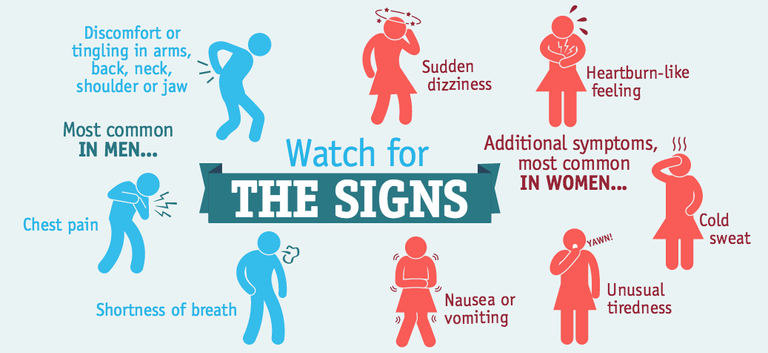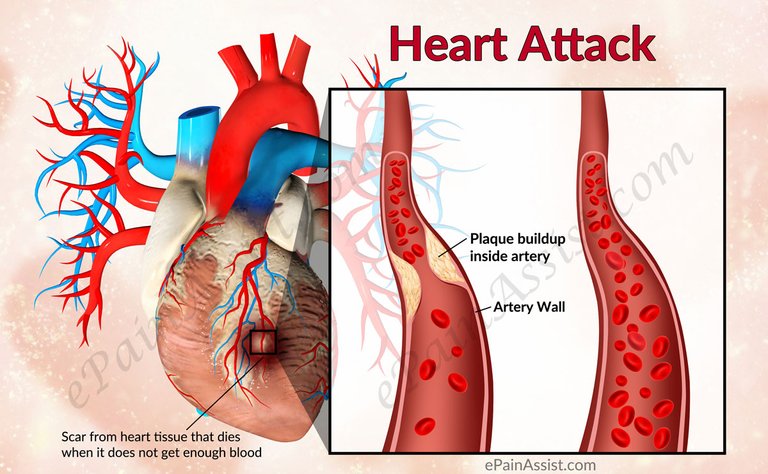Heart attack
What is heart attack?
‘Heart attack’- it is not an anonymous term for many people in developing countries and even in the world today. It is known to be life-threatening among all of us and with the higher rate of cases of the heart attack being heard, people have become more cautious and are eager on knowing what can prevent it or cure it. In the very first place, we need to understand what this condition actually is, before jumping onto the precautions to avoid the heart attack. In the simpler words, just the way our body needs air to breathe and survive, the muscles of heart need air to perform their day to day pumping activity. In the absence of air, the heart muscles start dying and at this very phase, we feel a sudden pain in the chest region which we refer to as a heart attack. The medical term for heart attack explains it all- Myocardial infarction. Here ‘myo’ means muscle, ‘cardial’-related to heart and ‘infarction’ – condition resulting from the lack of oxygen.
What causes heart attack?
Moving onto what causes this attack, there are several factors that can cause it –either being a single factor or a cumulative effect of more than one factor. One of the main cause is ‘coronary heart disease’ i.e. the disease that involves clogging of blood vessels that supply heart. Clogging of blood vessels cut off the blood supply. Thereby, the oxygen in the blood doesn’t reach the heart muscles and they start dying. The question is – what causes the clogging? Is it some collection of dirt or is it something else? Well, it’s a blood clot formed due to the rupture of a plaque made from cholesterol inside the blood vessel. So, where does this cholesterol come from? It comes from the diet that we have. It’s not that cholesterol is bad but the excessive amount of anything is not good, right? When it is in the right amount, it’s good for maintaining cell membrane, forming hormones(2), bile(3), etc. that are useful for the body. And when the same thing is excess, it gets diverted to another pathway as well, like getting deposited within the wall of blood vessels. With the passage of time, more cholesterol gets deposited and ultimately the plaque formed gets ruptured which enhances the formation of blood clot. While the chest discomfort resulting from this condition may seem sudden, but the evil cholesterol was already planning this climax and it was a steady process, wasn’t it?
Apart from the plaque inside those vessels, the other villain plotting for the heart attack is the coronary artery spasm. We, the innocent people fall for cigarettes and stimulants like cocaine for our own guilty pleasure, not knowing how they conspire against us by eliciting the spasm in coronary arteries. Besides, we make ourselves prone to myocardial infarction by enlisting ourselves within the all possible risk factors. Some risk factors are : age, gender, family history and yes, we have no control over these risk factors. But, we can help ourselves from getting attacks by avoiding the factors like hypertension, obesity, diabetes, smoking, inactive lifestyle, unhealthy diet and many more. These factors influence the development of cardiac attack directly or indirectly, and not even a factor can be considered weak from posing the threat to us. We should maintain a healthy and an active lifestyle as it promotes the clearance of excess ‘fatty things’ from our blood vessels. The physical activity burns all that excess fat before it could attack the vessels.
Signs and symptoms of heart attack
Signs and Symptoms
Although it’s a sudden process, there are some symptoms that can be taken into a consideration. The inevitable symptom is the chest discomfort or pain. The pain, sometimes, might have radiated to left arm ,shoulder, jaw or back. Other symptoms that can help detect this condition simultaneously are difficulty in breathing, cold sweats or light headedness. If these symptoms are spotted, then it’s always clever to rush to the hospital without trying to analyze the situation by ourselves. After all, not all of us are doctors and the cardiologists say ‘time is the muscle’ in this case.

(https://czthomas.files.wordpress.com)
Prevention of heart attack
Since the heart attack is a severe condition, it’s always good to prevent from having one rather having it and getting a lifelong treatment. As mentioned earlier, for prevention, it’s necessary to have a healthy lifestyle. For example, we can do light exercise for about 20 – 30 minutes every day. As the increasing age can lead us to the risk , we can always avoid foods having more cholesterol with time. Such foods are butter, ghee, egg yolk, red meat, etc. The measurement of blood pressure and blood glucose can also help to monitor diabetes and hypertension which contribute highly to having the attacks. Last but not the least, the person should have sound body and mind as well. Most of the times, stress can also result the attacks.
Diagnosis and Treatment
Talking about the diagnosis and the treatment that is given to the MI (6) patients, they are given the drugs to eliminate the clot causing the reduced blood supply to the heart. The drugs are referred as anticoagulantants(4). As for the confirmation of a diagnosis, several blood tests; electrocardiogram and angiogram are conducted. However, the treatment options may vary according to the individual and the level of damage that has been caused to the heart muscles. There are even interventional procedures like angioplasty(1) with stent placement and coronary artery bypass surgery to improve the blood flow through the coronary vessels(5).

Conclusion
With regard to all the risk factors and treatment options discussed here, it can be assumed that now we know how dangerous the heart attack can be and how we are easily prone to it. The lifestyle that people follow today is not the appropriate one and it is enabling the heart attack to approach us easily. As a matter of fact, the cardiovascular disease claims 17.7 million lives per year. Out of this, 80% of the casualties due to the cardiovascular diseases are either from heart attack or stroke. This is not a small number and it can’t be taken lightly. It’s high time that we start focusing on the betterment of our health rather than having junk foods and working at a place adapting the sedentary life, surrounded by the types of machinery to do even the tiniest of works. In a nutshell, heart attack does have a potential to be lethal but a small initiative from our side to follow every possible way of minimizing the risk can decrease the number of casualties happening every year from CVD(7). In simpler words, love your heart and it will love you to enable you to spread love and kindness all over the world.
Technical terms
(1)Angioplasty: procedure used to open a clogged up arteries
(2)Hormones: chemical substance released in bloodstream from the site of secretion to the site of action
(3)Bile: substance secreted by liver(one of its component is cholesterol as well) useful for emulsification
and digestion of fat
(4)Anticoagulants: drugs that dissolve the blood clot
(5)Coronary vessels: vessels supplying heart
(6)MI : myocardial infarction
(7)CVD : cardiovascular diseases
References:

